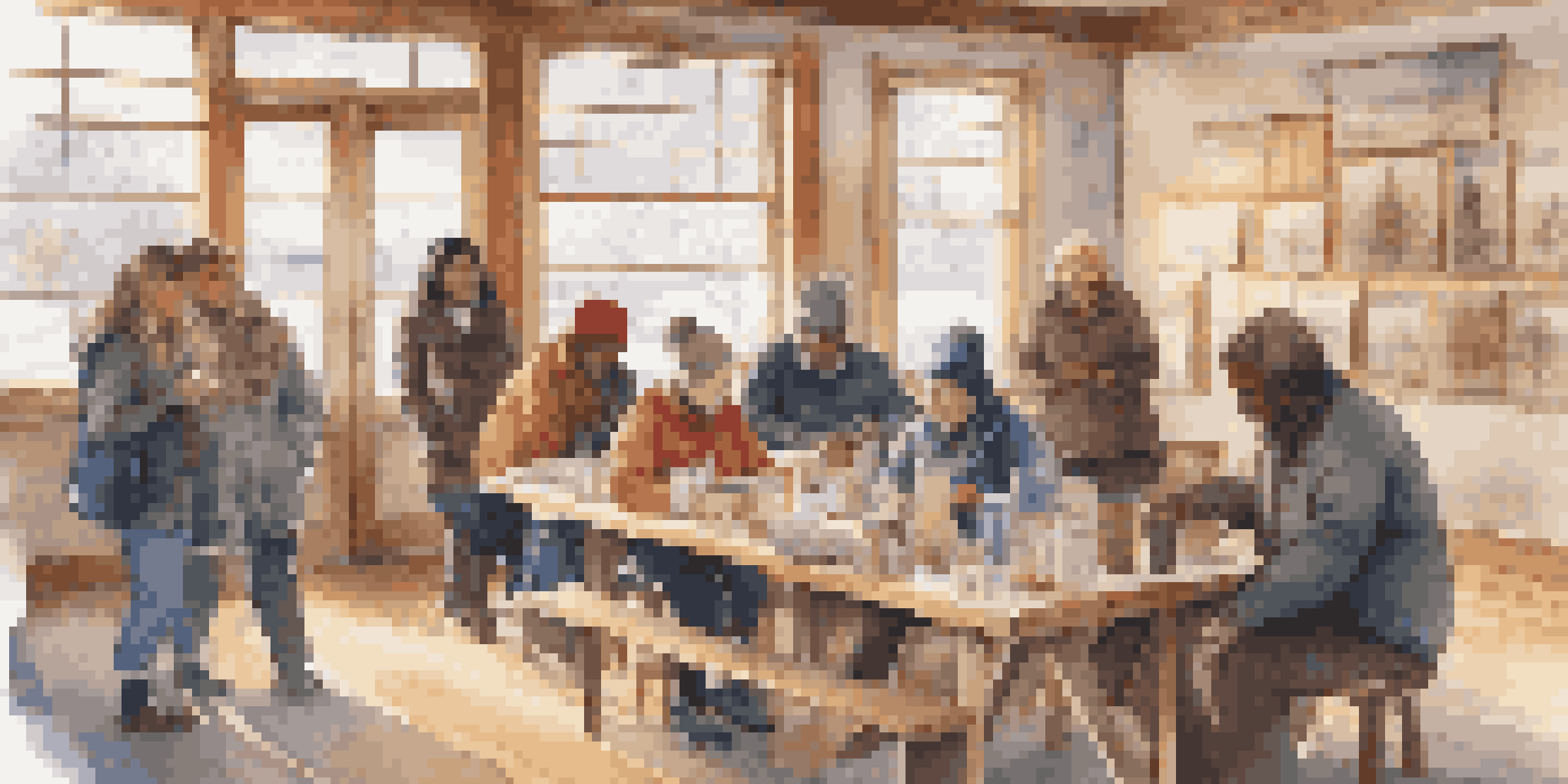How Community Support Can Help with Seasonal Mood Issues

Understanding Seasonal Mood Issues and Their Impact
Seasonal mood issues, often linked to changes in light and weather, can affect many people's mental health. Recognized as Seasonal Affective Disorder (SAD), this condition typically peaks in the winter months when daylight is scarce. Symptoms may include feelings of sadness, fatigue, and a lack of motivation, making everyday tasks feel overwhelming.
The greatest glory in living lies not in never falling, but in rising every time we fall.
However, it’s important to note that these feelings aren’t a personal failing; they are a legitimate response to environmental changes. By acknowledging that seasonal mood issues can happen to anyone, we can foster a more empathetic community. Understanding these feelings can help individuals seek support rather than suffer in silence.
Community support can play a crucial role in managing these seasonal challenges, providing a sense of belonging and shared experience. When people come together to discuss their struggles, it not only normalizes the conversation around mental health but also opens up avenues for assistance and understanding.
The Role of Connection in Overcoming Isolation
During tough seasons, feelings of isolation can intensify, making community connections vital. Building relationships—whether through local clubs, classes, or online groups—can counteract loneliness. Just knowing that others share similar experiences can be incredibly validating and comforting.

When we connect with others, we create a supportive network that can encourage us during challenging times. For instance, a group of friends sharing a hobby can provide a safe space for expressing feelings while engaging in enjoyable activities. This shared experience can make difficult moments feel lighter, providing relief and joy.
Understanding Seasonal Mood Issues
Seasonal mood issues, such as Seasonal Affective Disorder, can significantly impact mental health, especially during the winter months.
Moreover, these connections can lead to new friendships that might not only help during seasonal mood changes but can also enhance overall well-being. Engaging with others fosters a sense of purpose and belonging, which can be incredibly uplifting when the days are short and dark.
Local Support Groups: A Lifeline for Many
Support groups tailored to those experiencing seasonal mood issues can provide invaluable resources. These groups often create a safe environment for sharing personal stories, encouraging openness without judgment. Many find that simply talking about their feelings can lessen their burden significantly.
Alone we can do so little; together we can do so much.
In these settings, participants often learn coping strategies from one another, like mindfulness techniques or physical activities that can help improve mood. For example, someone might share how a daily walk in a local park has helped them feel more grounded. Such exchanges not only offer practical advice but also foster a sense of community and shared resilience.
Being part of a support group reminds individuals that they are not alone in their struggles. This collective understanding can lead to friendships that extend beyond the group, creating a network of support that lasts through the seasons—and beyond.
Engaging in Community Activities for Mental Health
Participating in community activities can be a fantastic way to boost mood during the colder months. Whether it’s joining a book club, attending local events, or volunteering, these activities provide opportunities for engagement and connection. They help shift focus away from negative feelings and towards positive experiences.
For instance, volunteering at a community kitchen not only helps those in need but also fosters a sense of purpose and achievement. Being part of something larger than oneself can be incredibly rewarding and can lift spirits and promote feelings of unity. Plus, engaging in activities can lead to meeting new people who may be experiencing similar challenges.
The Power of Community Support
Building connections through community activities and support groups can help individuals combat feelings of isolation and enhance their overall well-being.
The act of participation itself can be therapeutic. Whether crafting, cooking, or simply sharing a smile, these interactions can create a ripple effect of positivity, making it easier to navigate tough seasons together.
Online Communities: Finding Support from Afar
In our digital age, online communities have become essential for those seeking support, especially during seasonal mood challenges. Platforms like social media, forums, or dedicated mental health apps provide a space to connect with others who understand what you're going through. This is particularly beneficial for those unable to attend in-person gatherings due to geographical or personal constraints.
These virtual spaces allow individuals to share their experiences, offer advice, or simply lend an ear when someone needs to talk. For instance, participating in a Facebook group focused on mental health can lead to friendships that provide encouragement and support, even from a distance. It’s a reminder that help is just a click away.
Moreover, online communities can facilitate access to valuable resources, such as articles, videos, and workshops, that help individuals learn more about seasonal mood issues and coping strategies. This wealth of information can empower users to take proactive steps toward improving their mental health.
The Importance of Empathy and Understanding
Empathy is a powerful tool in combating seasonal mood issues within a community. When individuals make an effort to understand what others are going through, it creates an environment of compassion and support. Simple gestures, like checking in with a friend or offering a listening ear, can make a significant difference.
Communities that prioritize empathy not only help individuals feel more connected but also foster open discussions about mental health. For example, schools or workplaces that promote mental health awareness can create initiatives that encourage employees or students to share their challenges and seek help when needed. This proactive approach can significantly reduce feelings of isolation.
Creating a Culture of Empathy
Fostering empathy and understanding within communities can lead to open discussions about mental health, reducing stigma and encouraging individuals to seek help.
By nurturing a culture of understanding, we can help create safe spaces for everyone, allowing people to open up about their struggles without fear of judgment. This can lead to improved mental health outcomes and a stronger, more resilient community.
Creating a Culture of Support: Steps to Consider
Building a supportive community doesn’t happen overnight; it requires intentional effort from everyone involved. Starting with small initiatives, like hosting awareness events or creating online support channels, can lay the foundation for a culture of compassion. Encouraging open conversations about mental health can help destigmatize these issues, allowing more people to seek help.
Incorporating mental health education into community programs can also play a significant role. Workshops, seminars, or even casual meet-ups can provide valuable information on recognizing and addressing seasonal mood issues. These initiatives can empower individuals with the knowledge and tools they need to support themselves and others.

Ultimately, creating a culture of support is about fostering relationships based on trust, empathy, and understanding. By working together, communities can become a haven for those facing seasonal challenges, helping individuals navigate their struggles with the backing of a caring network.